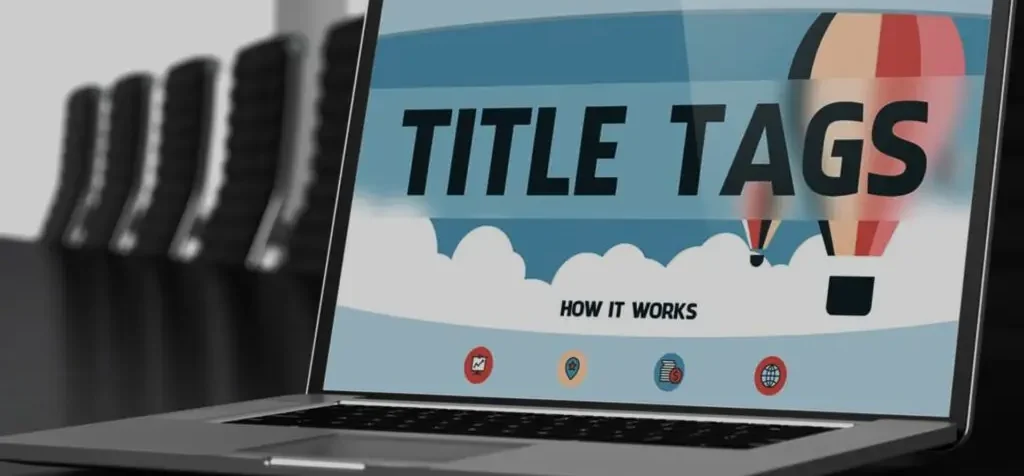
Introduction:
Writing SEO-optimized title tags is a key element of on-page SEO, as they directly impact both search engine rankings and click-through rates. A well-crafted title tag should include relevant keywords while remaining concise and compelling, ideally under 60 characters. It’s important to create titles that accurately reflect the content, aligning with user search intent. Avoid keyword stuffing and ensure the title is unique for each page. Regularly reviewing and updating title tags can help improve visibility and drive more organic traffic to your website.
Why Are Title Tags Important?
Title tags are a fundamental element of Search Engine Optimization, as they directly influence how search engines and users perceive your content. They help search engines understand the relevance of your page, affecting its ranking in search results. A well-crafted title tag can also boost click-through rates by capturing user interest and providing clear, concise information about the page. Overall, optimizing title tags is essential for driving traffic and improving user engagement with your site. Title tags are crucial for several reasons:
Search Engine Rankings: Title tags are a key on-page SEO factor, as search engines like Google use them to understand the content of your page. Including relevant keywords can help improve your page’s visibility in search results.
Click-Through Rates (CTR): A compelling, well-crafted title tag can encourage users to click on your link when it appears in search results, boosting your site’s CTR and organic traffic.
User Experience: A clear and descriptive title helps users immediately understand what the page is about, making it more likely they’ll engage with your content.
Branding and Credibility: A professional and consistent title tag reinforces your brand identity and can make your website stand out in a crowded search landscape.
Social Sharing and Bookmarks: Title tags often appear when your content is shared on social media or bookmarked, contributing to better visibility and user engagement across platforms.
Best Practices for Writing SEO-Optimized Title Tags
Title tags are among the most important components of on-page SEO. They not only help search engines understand the content of your page but also influence whether users will click through to your site from search results. Writing SEO-optimized title tags requires a strategic balance between clarity, relevance, and optimization. Here are some best practices to ensure your title tags are working hard for your site.
1. Prioritize Your Main Keyword:
The first rule of writing effective title tags is to include your primary keyword. This helps search engines quickly understand what your page is about, improving your chances of ranking for that term. Ideally, position the main keyword towards the start of the title, but avoid overloading it—ensure the title flows naturally and remains easy to read.
2. Keep It Concise:
Search engines usually show only the first 50-60 characters of a title tag in search results. If your title is too long, it may get cut off, potentially losing important information. Aim to keep your title under 60 characters to ensure that it’s fully visible to users.
3. Make It Descriptive and Compelling:
Your title should clearly convey the topic of the page while enticing users to click. A descriptive title that matches the search intent of your target audience will not only improve SEO but also increase your click-through rate (CTR). Use action words or a call to action if relevant (e.g., “Learn how to…,” “Discover…”).
4. Include Your Brand Name:
If your brand is well-known, make sure to add it to the title tag, usually towards the end. This not only reinforces your brand’s identity but can also help improve trust and credibility.
5. Avoid Keyword Stuffing:
While it’s important to include your main keyword, don’t stuff your title with irrelevant or excessive keywords. A cluttered title tag can confuse both users and search engines, negatively affecting your rankings and CTR.
How to Optimize Title Tags for CTR
Even if your title ranks well, it needs to attract clicks. Here’s how to maximize CTR:
Use Numbers: “Top 10” or “5 Easy Steps” titles perform well.
Include a Call to Action: Phrases like “Learn More” or “Try Today” can encourage users to click.
Add a Year: Titles with current years signal up-to-date content. Example: SEO Strategies for 2024.
Common Mistakes to Avoid
Using the Same Title for Multiple Pages: Causes keyword cannibalization.
Missing Keywords: Reduces relevance to search queries.
Clickbait Titles: May increase bounce rates if the content doesn’t deliver.
Conclusion:
Crafting effective SEO-optimized title tags is essential for improving your website’s search performance and click-through rates. By following the strategies outlined in this guide, you can create compelling, keyword-rich titles that attract both search engines and users. Regularly revisiting and optimizing your title tags ensures your content stays competitive in the ever-changing digital landscape.
Also Read: Fixing Crawl Errors for SEO
